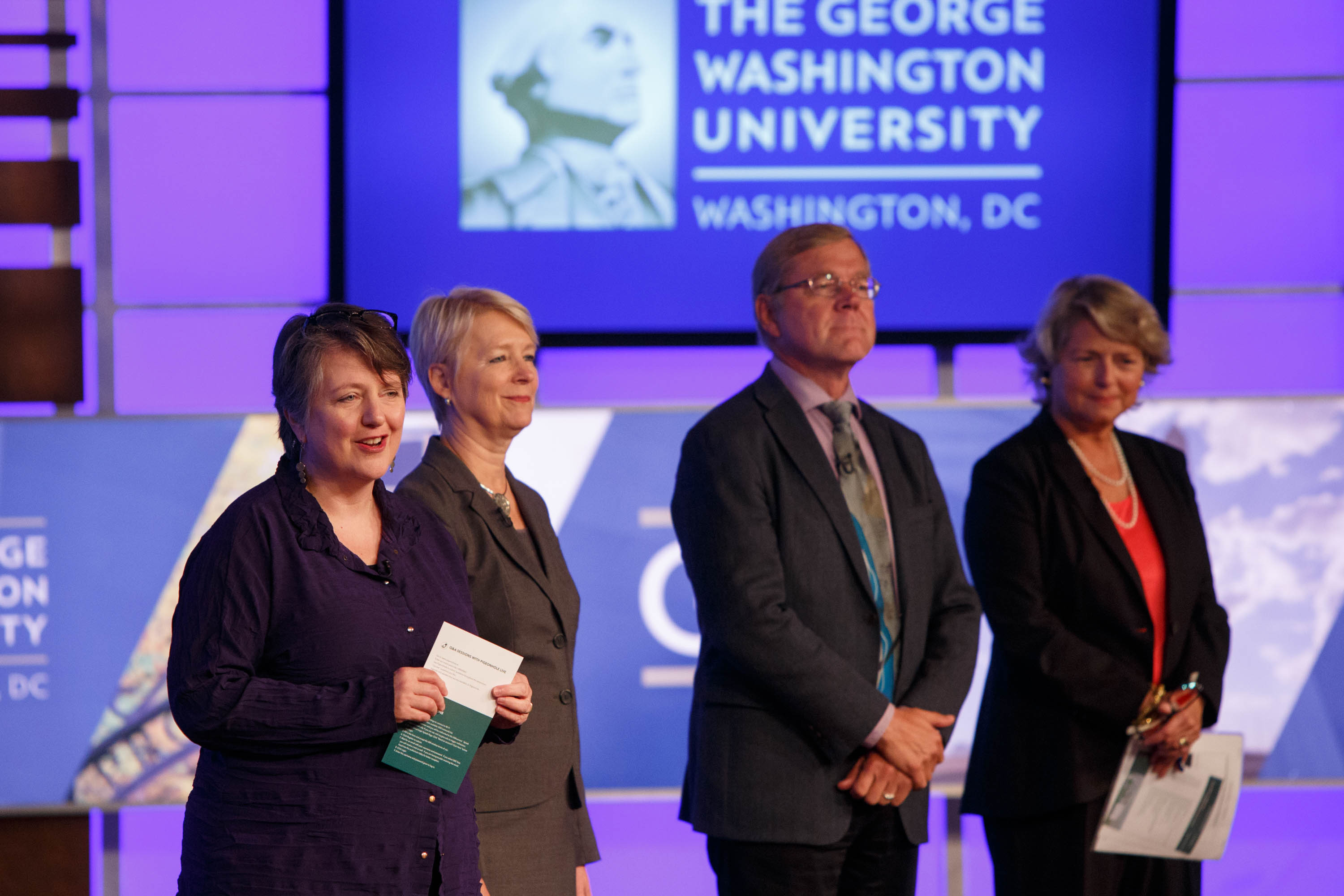A group of policymakers, academics and practitioners planted the seeds Friday for elevating the importance of urban agriculture as Congress begins working on the country’s next Farm Bill, which authorizes spending for food and agriculture programs in the country.
Rep. Marcy Kaptur (D-Ohio), who provided remarks via video message, emphasized that current food production strategies are unsustainable and insufficient in meeting projected population growth. Urban agriculture would help, she said.
She offered ideas for urban resources that are “waiting to be utilized,” including vacant properties that could be hosts to energy- and water-efficient greenhouses and manufacturing operations that could channel waste heat for a four-season growing operation.
 Rep. Marcy Kaptur (D-Ohio) addressed attendees about the urban resources that can be used to support agriculture, such as turning vacant lots into greenhouse sites. (Logan Werlinger/GW Today)
Rep. Marcy Kaptur (D-Ohio) addressed attendees about the urban resources that can be used to support agriculture, such as turning vacant lots into greenhouse sites. (Logan Werlinger/GW Today)
“Creating a marker for urban agriculture in the next Farm Bill will allow all of America to lead the way addressing these challenges,” she said.
The legislative process for the next Farm Bill, which Congress passes every five years, is scheduled to take place in 2018 and 2019.
In the coming days, Ms. Kaptur said she plans to reintroduce urban agriculture legislation in Congress, including $500 million in programmatic funds for local food systems, marketing networks and research and education initiatives.
Sen. Debbie Stabenow (D-Mich.) also discussed her legislation, the Urban Agricultural Act of 2016, that would provide resources “specifically designed to meet the unique needs of urban producers,” including soil testing and new research for technologies that lower energy and water needs.
These resources complement rather than take away from other farmers, she said. “Farming is not all rural, and hunger is not only urban,” Sen. Stabenow said.
“It’s clear that urban agriculture is an important part of the whole agriculture sector and should be incorporated into our nation’s broader food and agriculture discussion,” she said.
Over the course of the day, attendees got a crash course in urban agriculture: the unique considerations of growing crops in various landscapes, how it supports social justice, how the business and financing side of it works, what the younger generation thinks about it and how to care for urban livestock.
They also heard about further research needs and opportunities in urban agriculture, and provided ideas for policymakers as they work on the next Farm Bill.
George Washington President Steven Knapp provided welcoming remarks.
Over the last decade, he said, “we zeroed in on a number of issues that we thought were particularly appropriate for a large urban university located between the White House and the State Department.”
 GW President Steven Knapp (Logan Werlinger/GW Today)
GW President Steven Knapp (Logan Werlinger/GW Today)
That includes, he said, the issue of storm water runoff; increasing the amount of energy the university sources from solar power; and supporting healthy eating, food access and food justice. He said the work of the university’s Urban Food Task Force, Food Institute and its relationship with chef José Andrés has been critical in advancing these issues.
Kathleen Merrigan, executive director of sustainability, told attendees that while her upbringing was in rural America, she has realized over the years that there is “more and more innovative stuff going on in urban agriculture.”
“We really want to use today to gather up ideas, gather up visions, to really try to explore the expertise out there to bring all of this into the Farm Bill discussions,” Dr. Merrigan said.
The GW Sustainability Collaborative; AGree, which works to build consensus on food and agriculture issues; Michigan State University; and the University of the District of Columbia cohosted the event and Sweetgreen sponsored it.


